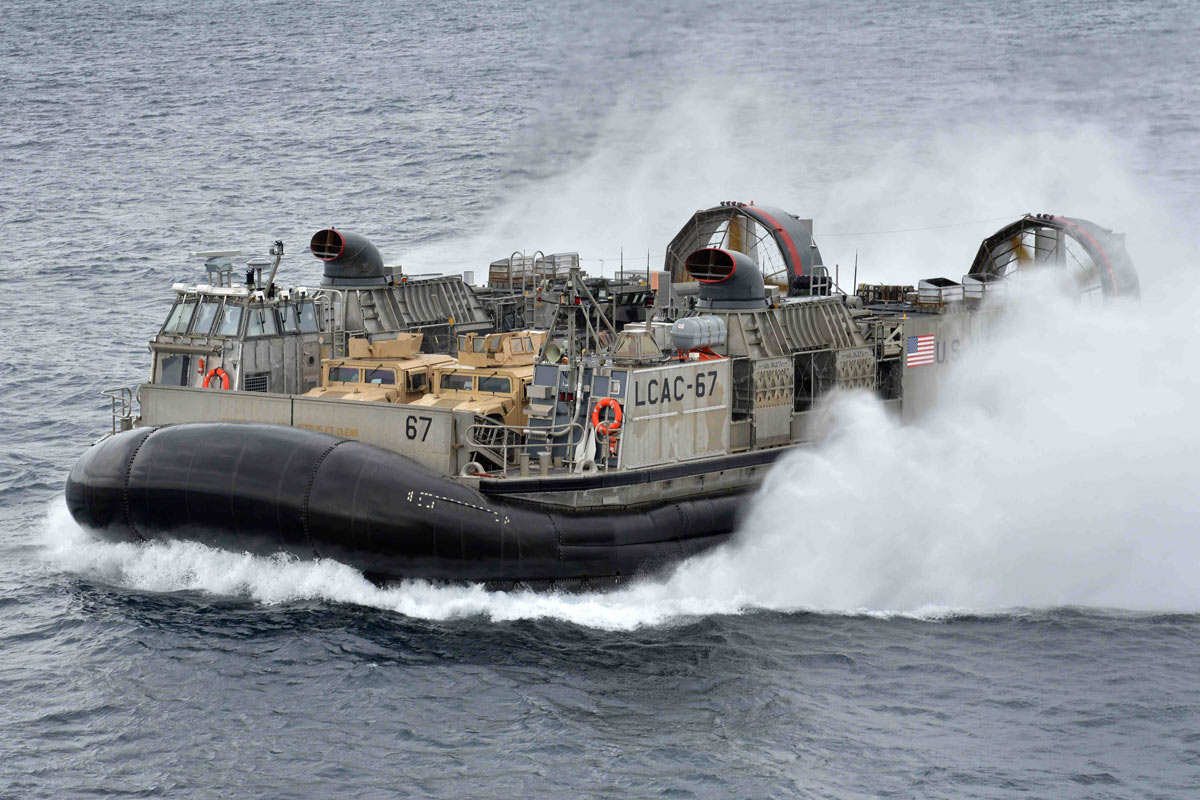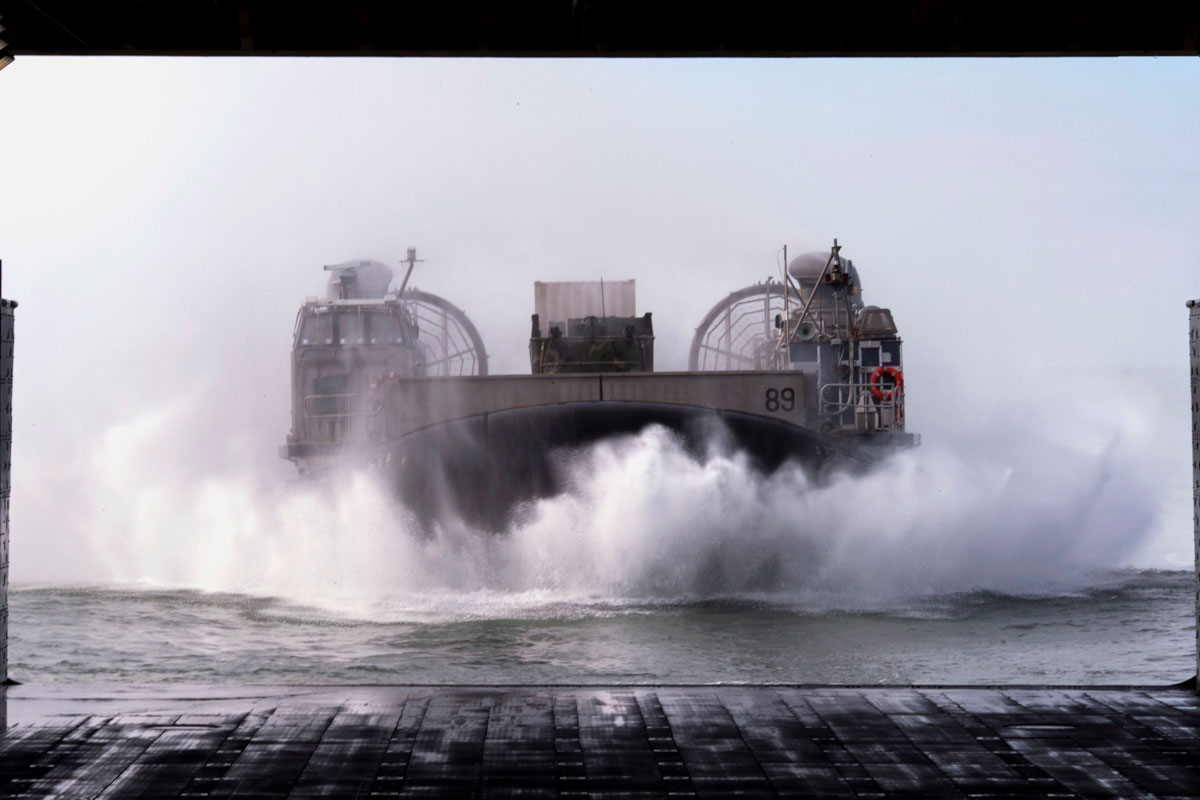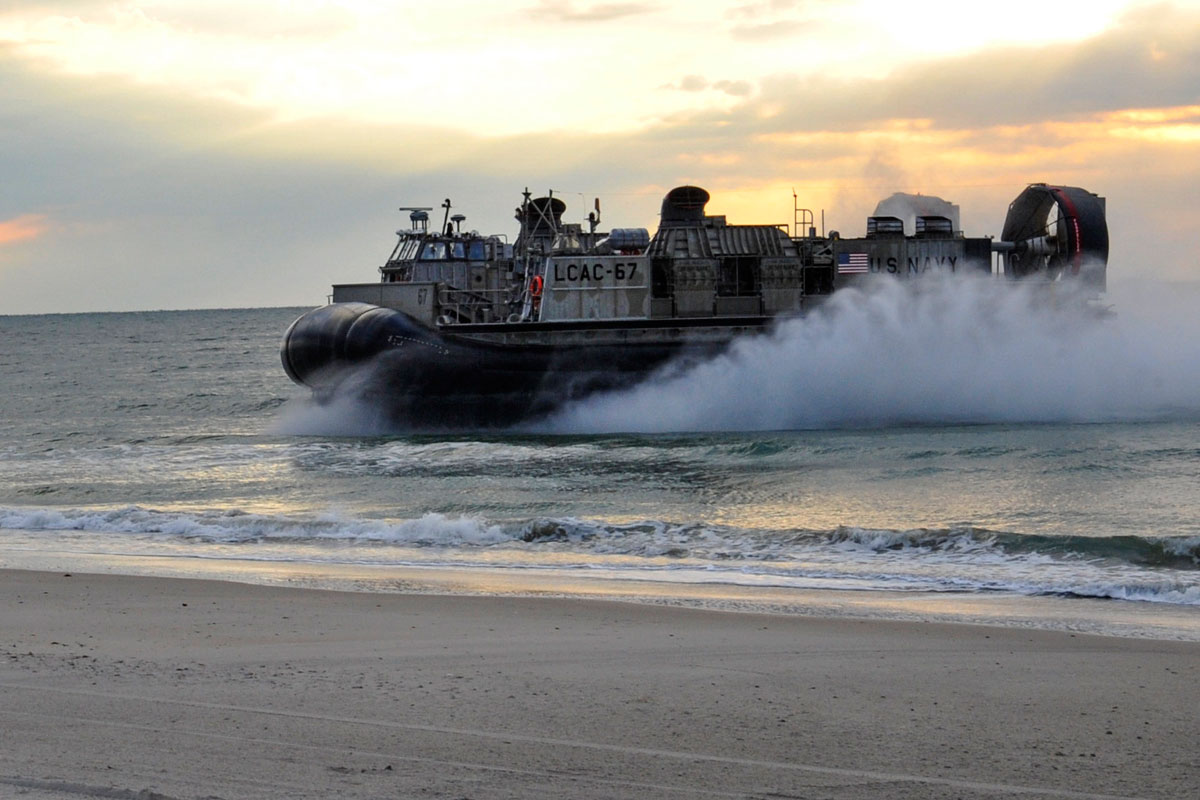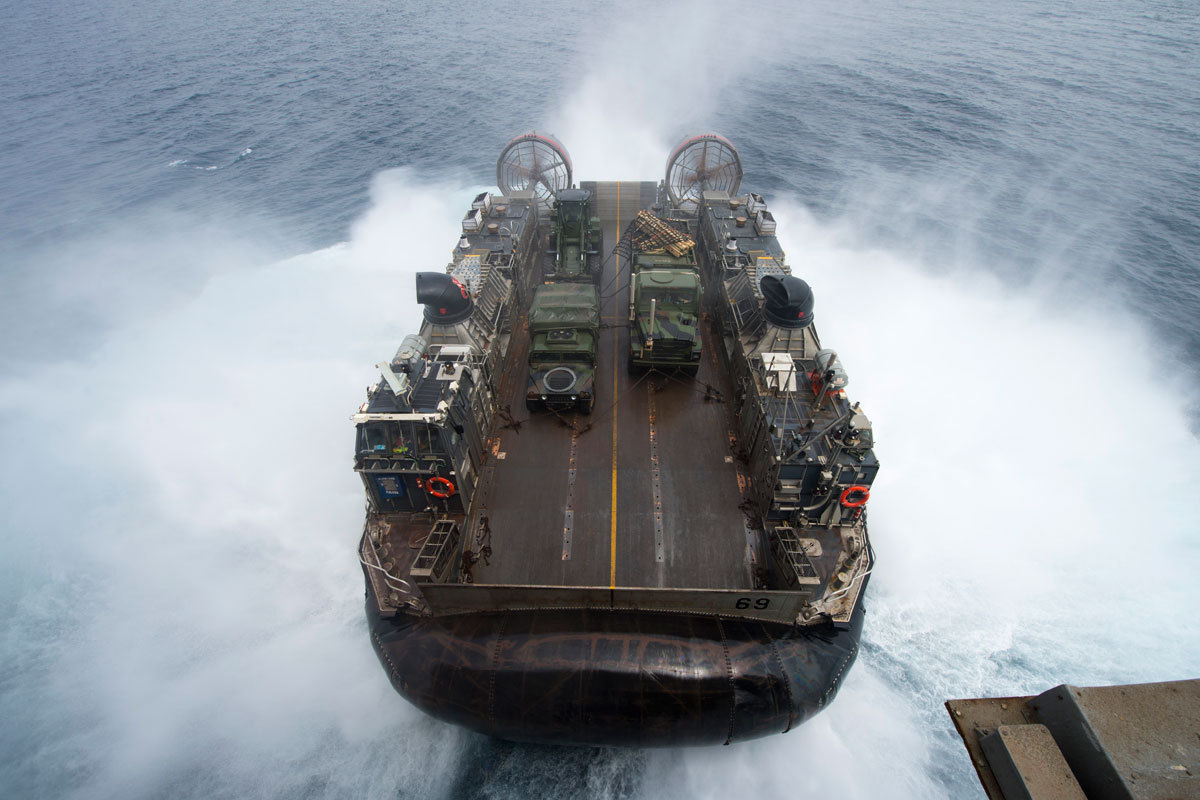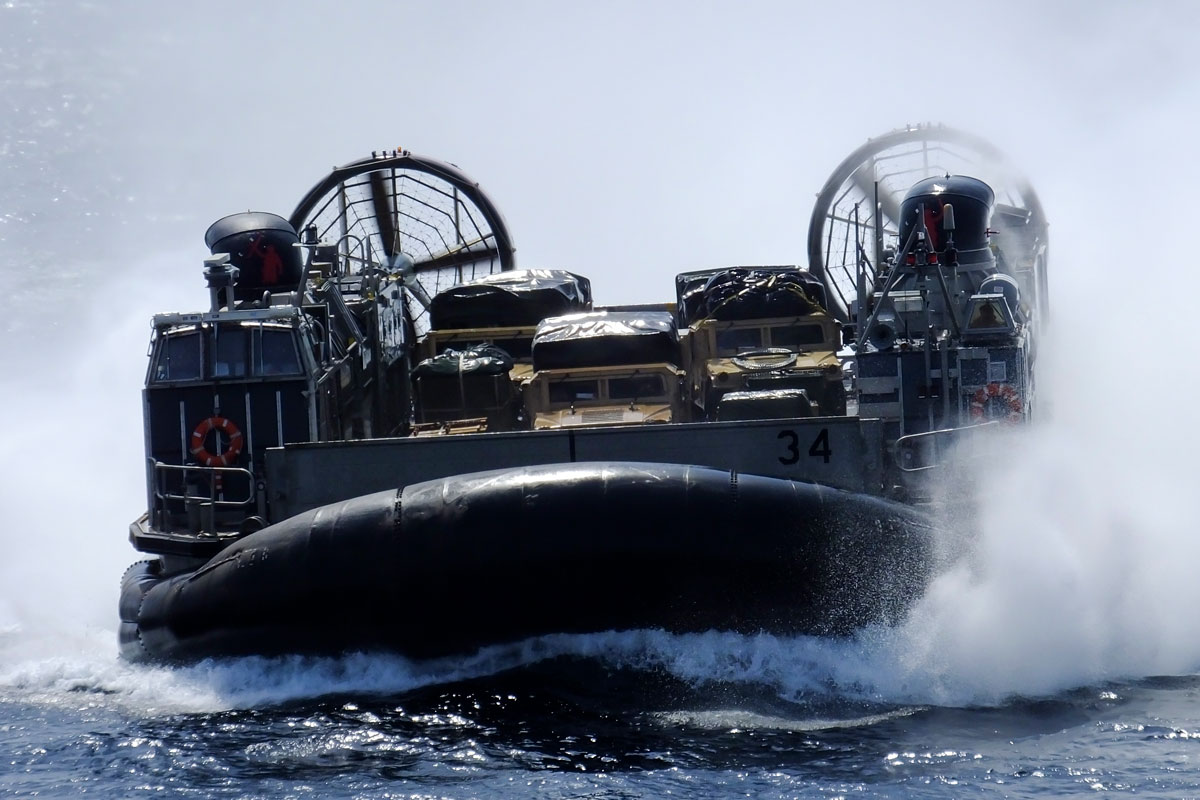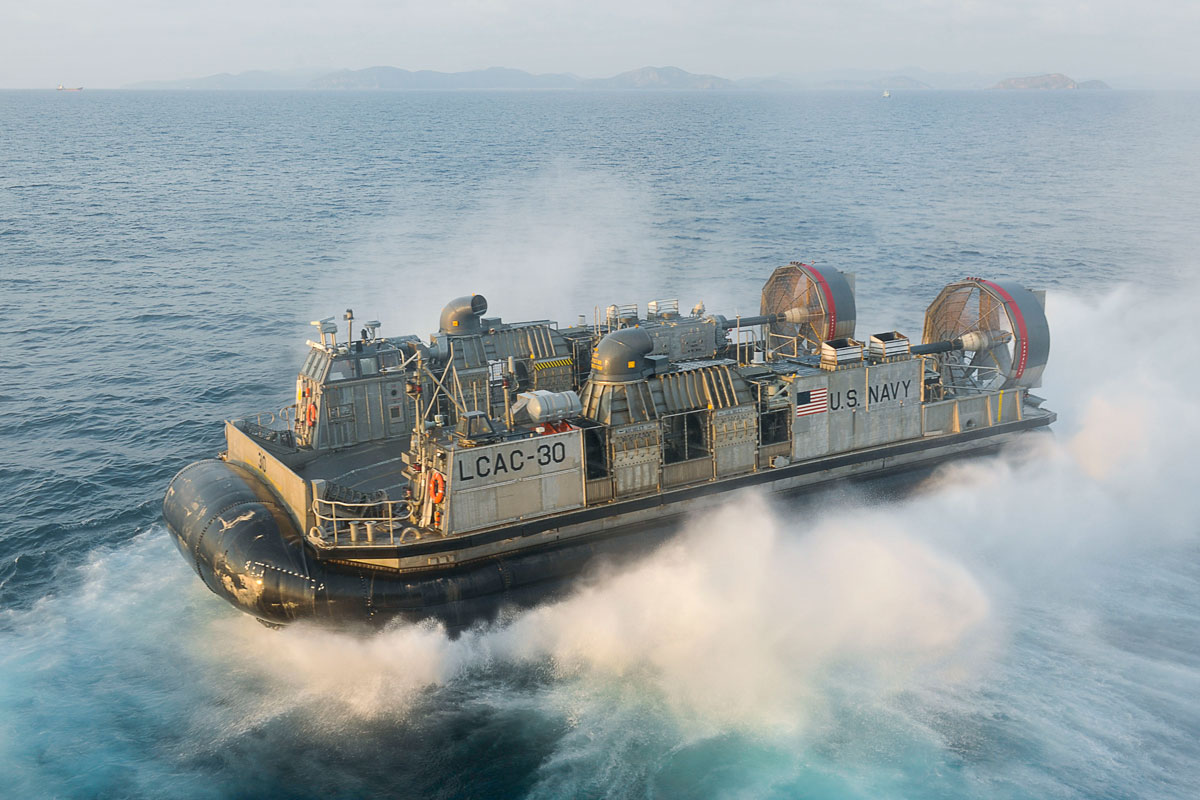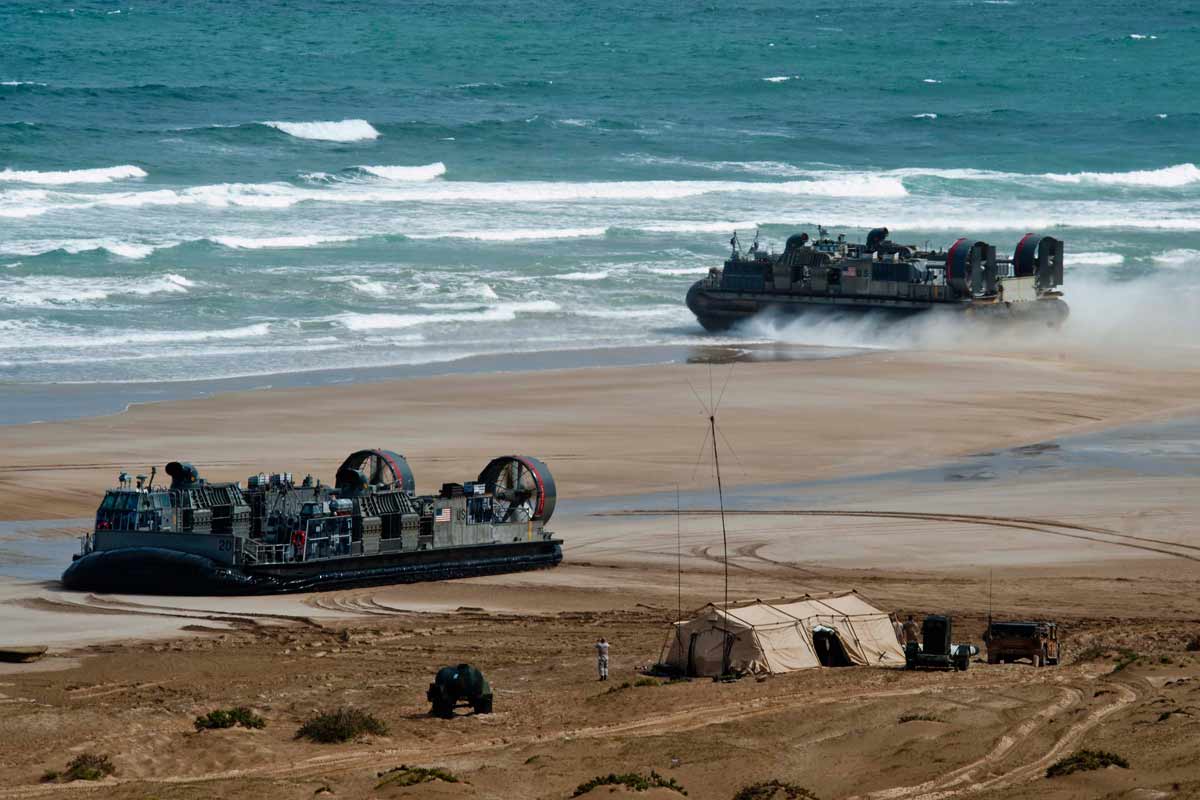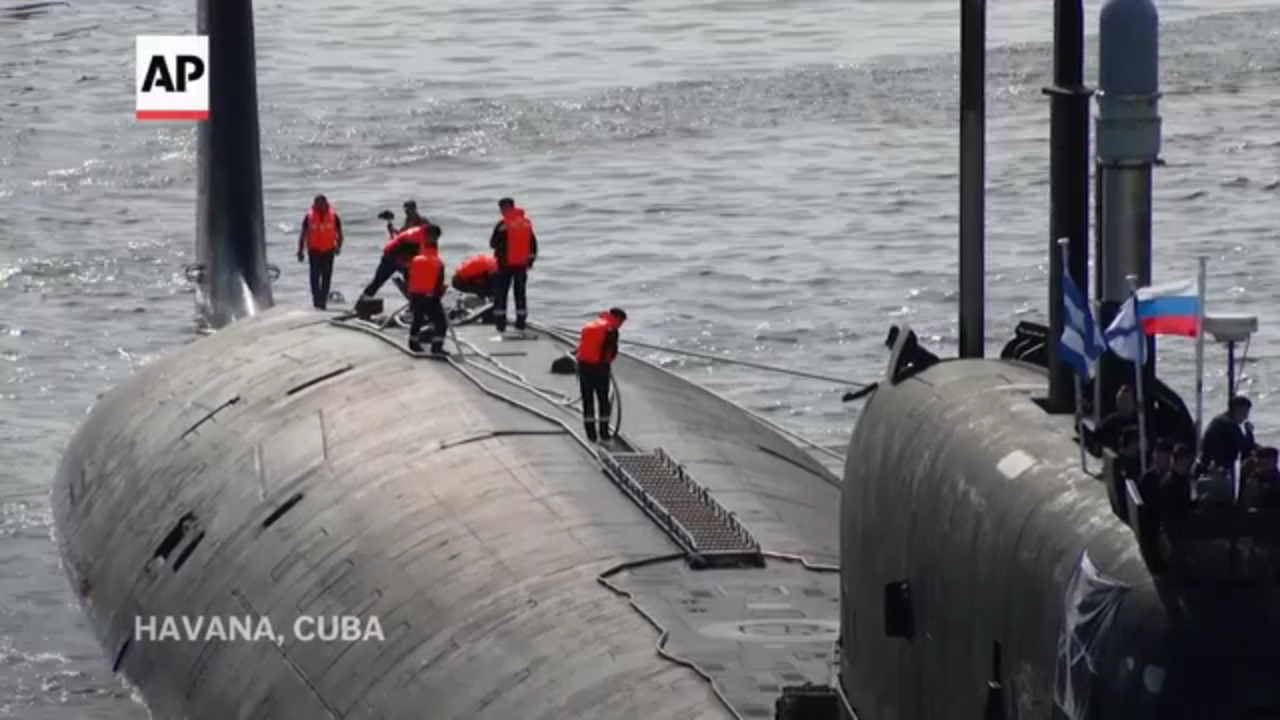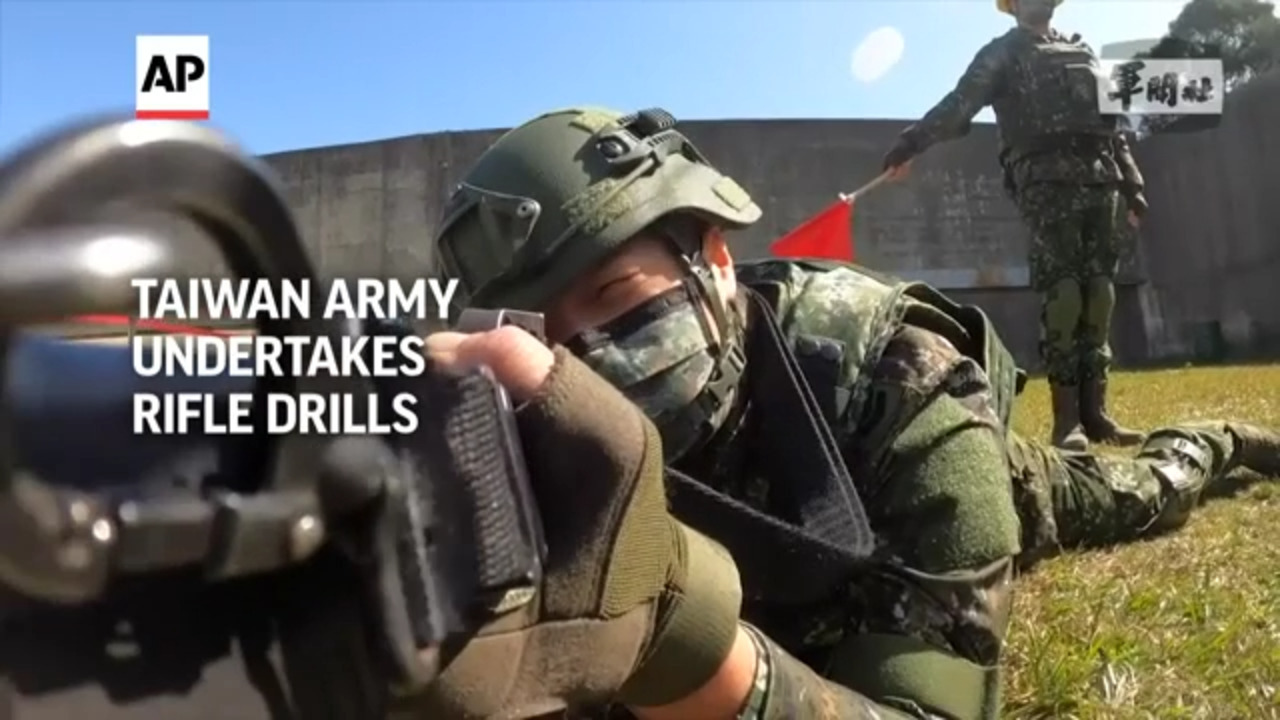Manufacturer: Textron Marine and Land Systems/Avondale Gulfport Marine.
Service: USMC
Propulsion: 4x Allied-Signal TF-40B gas turbines
Armament: 2x Gun mounts will support M2HB .50 Cal machine gun; M240 7.62 mm machine gun; MK-19 MOD3 40 mm grenade Launcher
Speed: 40+ knots (46+ mph; 74.08 kph) with full load.
Range: 300 miles
Crew: Five
Load: 60 tons
The Landing Craft Air Cushion, or LCAC, is used primarily by the U.S. Marine Corps to transport troops and equipment from amphibious ships to operations ashore. The LCAC is the only transport that can transport an M-1 Abrams tank from an amphibious ship to the beach.
The Landing Craft, Air Cushion (LCAC) is a high-speed, over-the-beach fully amphibious landing craft, capable of carrying a 60-75 ton payload. The LCAC payload capability and speed combine to significantly increase the ability of the Marine Ground Element to reach the shore. Air cushion technology allows this vehicle to reach more than 70 percent of the world's coastline, while only about 15 percent of that coastline is accessible by conventional landing craft.
Concept Design of the present day LCAC began in the early 1970s with the full-scale Amphibious Assault Landing Craft (AALC) test vehicle. During the advanced development stage, two prototypes where built. JEFF A was designed and built by Aerojet General in California. JEFF B was designed and built by Bell Aerospace in New Orleans, Louisiana. These two craft confirmed the technical feasibility and operational capability that ultimately led to the production of LCAC. JEFF B was selected as the design basis for today’s LCAC. The first LCAC was delivered to the Navy in 1984 and Initial Operational Capability (IOC) was achieved in 1986. Approval for full production was granted in 1987. After an initial 15-craft production competition contract was awarded to each of two companies, Textron Marine and Land Systems (TMLS) of New Orleans, La., and Avondale Gulfport Marine, TMLS was selected to build the remaining craft. A total of ninety-one LCAC have now been built. The final craft, LCAC 91, was delivered to the U.S. Navy in 2001.
This craft served as the basis for the Navy’s LCAC Service Life Extension Program (SLEP). The program of record is to SLEP 72 operational craft and 1 R&D craft. Forty-six LCACs have been SLEP'd as of Oct. 10, 2013 (includes the 1 R&D craft) and seven LCACs are under contract to be SLEP'd through FY2013. An additional twenty are planned to be SLEP’d through FY2018 for a total Program of Record of 72 operational SLEP crafts and 1 R&D SLEP craft.
LCAC first deployed in 1987 aboard USS Germantown (LSD 42). LCAC are transported in and operate from all amphibious well deck ships including LHA, LHD, LSD and LPD. The craft operates with a crew of five.
In addition to beach landing, LCAC provides personnel transport, evacuation support, lane breaching, mine countermeasure operations, and Marine and Special Warfare equipment delivery.
All of the planned 91 craft have been delivered to the Navy. A Service Life Extension Program is currently in progress to add 10 years of service life to the craft design life, delaying the need to replace these versatile craft.
A contract was awarded to Textron, Inc. on 6 July 2012 for a new Ship to Shore Connector (SSC) craft, to replace the retiring LCAC.
